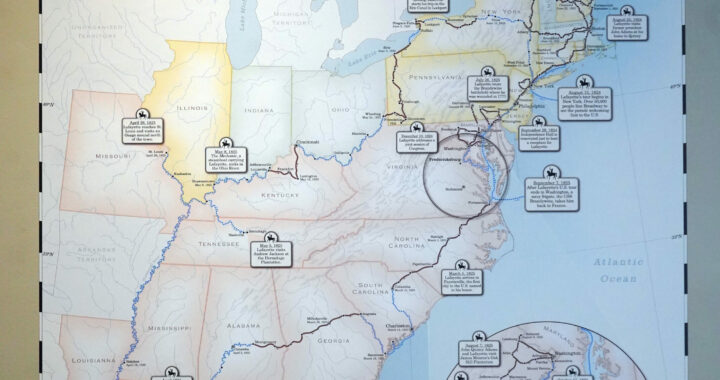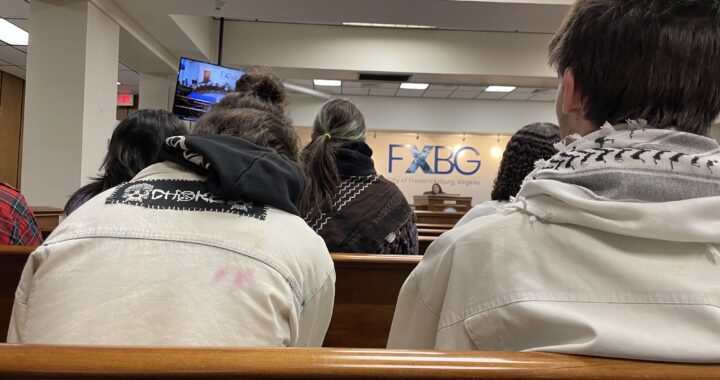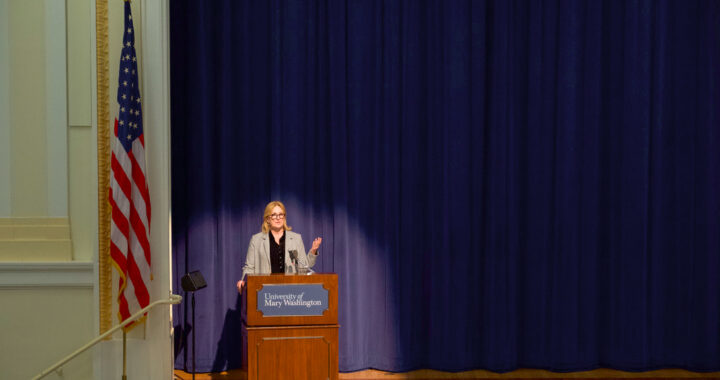Crawley Publishes 'History of UMW'
4 min readBy ANDREA NEALON
Student life during the Vietnam War at the University of Mary Washington mirrored a tense time in the nation’s history, and William B. Crawley’s effectively depicts the paralleled paths of campus events and national developments in his newly published book, “The University of Mary Washington: A Centennial History: 1908-2008.”
“I’ve always thought the most riveting, poignant, and powerful section of the book was on the Vietnam War,” Jack Bales, the University’s reference and humanities librarian, said. “Dr. Crawley heard from the President of the class of 1968, who told him what it was like back then, particularly for girls who were dating men in the service and especially those dating Marines at Quantico.”
Crawley, distinguished professor of history and American studies and UMW’s historian, is one who has lived through many of these experiences. A Mary Washington faculty member for nearly four decades, Crawley has served as executive assistant to the president and has had a hand in many of the school’s milestone events.
“Writing about some situations can be pretty emotional,” Crawley said.
Bales recounted how meticulously Crawley researched and wrote his book.
Crawley worked for “thousands of hours. I’d go into his office and there were stacks of papers, piles of cassette tapes, writing pads covered with notes and drafts of his book,” Bales said.
“Some college histories are simply a series of disconnected paragraphs or topics. Dr. Crawley’s book is a true narrative.”
The book, which contains over 800- pages, is the culmination of 20 years of research and more than 100 interviews.
Released in conjunction with the University’s 100th anniversary, the account features colorful profiles of faculty, staff, students, alumni, and community members who have invigorated the institution.
“I wanted to write it in such a way that readers see the college community in the larger context of social and cultural change,” Crawley said.
He traces the history and development of the University from its humble beginnings as a normal and industrial school for women, to its current status as a highly acclaimed liberal arts coeducational institution with a graduate and professional studies program. He covers a wide range of events, including the decision for coeducation, student traditions, academic and architectural expansion and the centennial celebration.
“He covers not only the history of UMW but was also careful to show how events on campus–such as Vietnam War protests–mirrored what was going on all across the country,” Bales said. “So his book is a valuable historical document as well as a college history, especially as Dr. Crawley writes with the accuracy of a historian and the storytelling abilities of a novelist.”
A Chatham native, Crawley did not shy away from controversial topics, including the institution’s move to university status or the brief presidency of William Frawley.
“Many people are surprised to learn that I included the Frawley era in the book,” he said. “But it was a part of our history.”
In keeping with controversy, Crawley also discussed a faculty member he called the “enfant terrible” of the department of English, Linguistics, and Communication– Associate English Professor Steve Watkins.
One incident Crawley included in the book is about an open-mic night held at the Underground in 1999. During the evening, a student’s “stand-up (self-style) comedy routine of such scatological and racist content” caused a number of audience members to walk out. Watkins, who was among those disgusted with the routine’s unabashed racism, uttered an epithet as he and the others left the Underground. According to Crawley, Watkins’ comments ended up garnering more attention than the tactless routine that sparked the controversy in the first place.
Watkins, the Bullet’s long-time adviser, was cited in a number of passages in the book – often negatively.
“It’s kind of a funny little book, actually,” Watkins said. “An inside-baseball history that’s curiously opinionated–alternately bitchy and self-congratulatory. To the extent I guess I’ll ever read it, I do appear to get to be the villain–or at least the resident scoundrel–which is always fun. The William Ayers of dear Mary Washington.”
Almost as entertaining, but at times just as shocking, were the colorful anecdotes about student life. Crawley recounted such traditions as Devil Goat Day, May Day and Halloweens. He also describes the development of the school’s honor system, service organizations and the successful athletic program.
However, said Crawley, “writing about the students was the most enjoyable part of the process.”
Bringing the book to a bittersweet close were the commencement exercises of 2007, wherein Crawley adeptly painted a vibrant portrait of Ball Circle.
“What better way to end than with a beginning?” Crawley said.
3,000 copies of the book have been printed and approximately 750 copies sold so far, including pre-sales.
“Dr. Crawley worked very, very hard to achieve this challenging goal, and he hit a home run,” Dr. Ranjit Singh, Profesor of Political Science said.











